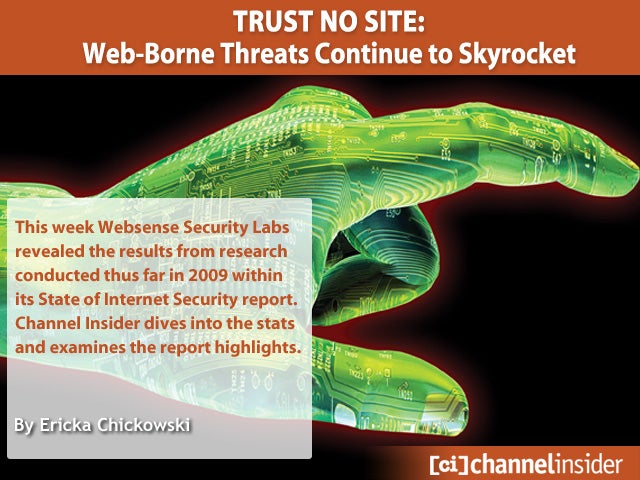 Trust No Site Web Borne Threats Continue to Skyrocket
Trust No Site Web Borne Threats Continue to Skyrocket
This week Websense Security Labs revealed the results from research conducted thus far in 2009 within its State of Internet Security report. Channel Insider dives into the stats and examines the report highlights.
By Ericka Chickowski
 No Title
No Title
The number of malicious sites found by Websense skyrocketed by 233% during the first half of 2009 and by a whopping 671% from June 2008 to June 2009.
 No Title
No Title
Of those sites containing malicious code, 77% were legitimate sites that had been compromised. Websense pointed blame for such infections on malware attacks such as Gumblar, Beladen and Nine Ball that compromise Web sites through massive code injection campaigns.
 No Title
No Title
Approximately 37% of these Web-borne threats are designed to steal data.
 No Title
No Title
Nearly half of the sites Websense classifies as the top 100 visited Web properties support user-generated content. These user-generated content sites also make up the majority of the top 50 most active distributors of malicious content.
 No Title
No Title
Just over 60% of the top 100 most active Web sites either host malicious content or contain a masked redirect to a malicious site.
 No Title
No Title
In addition to malicious infection of legit sites, the bad guys are still drumming up phony sites to fool unsuspecting users. This year, Websense has found more than 200,000 copycat social networking sites including Facebook, MySpace and Twitter within their URLs (for example, hotbabesofmyspace999.com).
 No Title
No Title
The moral grey area of the Web-such as porn and gambling sites-is a hotbed for malware activity. Approximately 78% of sites found by Websense in 2009 containing objectionable content also contained at least one malicious link.
 No Title
No Title
Websense’s ThreatSeeker Network detected 922,433 instances of 623 unique pieces malware before antivirus vendors during the first half of 2009. It says the average window of exposure for antiviruses to be created during these six months was 22 hours.

